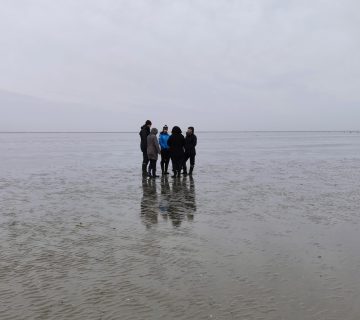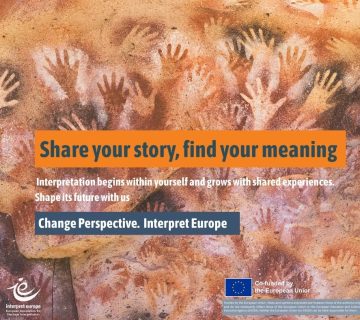Three interpretation workshops in Kočevsko trained locals to share the region’s rich natural and cultural heritage in deeper, more engaging ways.
Nestled in the heart of Slovenia, Kočevsko is a region defined by vast forests, rich biodiversity, and cultural depth. With over 90% of its landscape covered in forest, it stands as one of the most pristine, secluded, and ecologically important areas in the country. Beyond its natural wonders, Kočevsko holds a long history of traditions, and stories waiting to be discovered. This unique blend of wilderness and heritage offers a powerful foundation for storytelling—especially when paired with thoughtful interpretation that brings meaning, context, and emotional connection to the surface.
In early 2025, Kočevsko hosted a series of heritage interpretation workshops, bringing together local professionals to explore new ways of presenting the region’s heritage. Supported by the HealthyForestRegions project (Interreg Central Europe) and led by Interpret Europe certified trainers, the programme focused on guiding, writing, and planning.
The Certified Interpretive Planner (CIP) course launched the series in January. It introduced structured methods for analysing heritage sites, sites, identifying the potential for meaningful connections, and designing inclusive, sustainable visitor experiences. Emphasising long-term thinking and stakeholder involvement, the course set a strong foundation.
Participant Nevenka Klun reflected: “I recently attended the planner training, and it was both engaging and educational. The seminar offered deep insights into planning for cultural and natural heritage. Balancing the needs of visitors, stakeholders, and heritage itself can be challenging—but when done right, it benefits everyone. Since Kočevsko is so forested, we must present this natural heritage in a way that informs and captivates, turning the experience into something truly memorable.”
Next came the Certified Interpretive Writer (CIW) course. This module focused on turning factual content into emotionally engaging narratives. Through exercises, peer feedback, and thematic reflection, participants learned to tailor texts that can reach diverse audiences.
For some, it was a chance to build on earlier experience. As Dr. Petra Draškovič Pelc noted:
“I was glad to build on my previous writer and planner training. This approach offers a clear structure for reaching guests more deeply—inviting them to reflect and adding that ‘something extra’. The trainers turned complex ideas into something both practical and inspiring.”
The final workshop was the Certified Interpretive Guide (CIG) course. Held outdoors over five days, it brought interpretation theory into practice. Participants delivered interpretive talks, used sensory engagement, and learned how to prompt reflection—even in unpredictable weather.
Janez Konečnik, an experienced local guide, said: “When I was first invited, I thought—why do I need this? I already know how to guide. But the training changed my perspective. Even with decades of experience, I left with fresh insights and a better understanding of how differently people perceive the same thing.”
Offered free of charge, the workshops not only improved individual skills but also strengthened community bonds. Participants described the experience as transformative—both personally and professionally.
Together, these trainings helped form a new network of interpreters—ready to tell Kočevsko’s stories in ways that speak to both heart and mind.
Nadija Kolmanič is a cultural anthropologist and public relations advisor at the Institute for Tourism and Culture Kočevje, Slovenia (www.kocevsko.com). She works on developing content and strategies for local tourism promotion and manages communication across various platforms. You can reach her at nadija.kolmanic@kocevsko.com.
To cite this article: Kolmanič, Nadija (2025) ‘Shaping stories of nature and heritage‘ in Interpret Europe Newsletter 2-2025, pg.10.
Available online: Newsletter summer 2025




